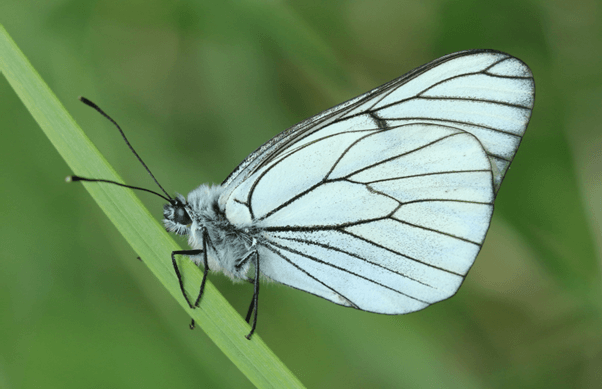Bringing Back the Black-veined White Butterfly
By Bonnie Metherell - 08 August 2024
The black-veined white butterfly, with its distinctive black-veined wings and elegant flight, was once a familiar sight in the hedgerows and woodlands of Sussex. However, a run of wet autumns and lack of suitable habitat resulted in this species becoming extinct in the UK in the early 1920s.
With rising temperatures in the UK we have an opportunity to reintroduce this large and striking butterfly to areas of scrub-rich habitat where we know it can survive and thrive. We are bringing together a community of passionate scientists, volunteers and landowners to reintroduce this species to southern England – from Sussex to Devon.
A number of small-scale reintroductions of black-veined white have been attempted over the years however none have been successful, likely due to the adults quickly dispersing. Most famously, Winston Churchill, butterfly lover and wildlife gardener, attempted (but failed) to introduce them to his home at Chartwell in Kent.
Key to the success of this reintroduction will be finding sites with sufficient suitable scrubland habitat as black-veined white caterpillars rely on hawthorn and blackthorn as their main food source. We have identified suitable sites along the Weald to Waves corridor in Sussex, and along the river Dart in Devon, which have plentiful scrub and which are sufficiently well connected to support a population of black-veined whites.
We are working in partnership with Butterfly Conservation, the University of York, Ambios Ltd, Natural England and the Zoological Society of London to return this beautiful butterfly to our shores. This work has been supported by Natural England and generous donations from the Lawson Trust and the D S Smith Charitable Foundation.
To bring together our current knowledge of black-veined white distribution, and assess the feasibility of reintroducing this species in the UK, we have published the following paper:
Chris D Thomas, Charles A Cunningham, Neil A C Hulme, Eleanor C Corrigan, Bonnie Metherell, Penny Green and Matthew Oates (2024) Assisted colonisation prospects for the black-veined white butterfly in England. bioRxiv 2024.05.21.595182; doi: https://doi.org/10.1101/2024.05.21.59518
Working in partnership and using tried and tested methodology, we are confident we can follow the successes of other reintroduced butterflies, such as the large blue and the chequered skipper – both of which were declared extinct in the UK in the last part of the 20th century and both of which are now thriving thanks to reintroduction projects.

Image: © Neil Hulme

